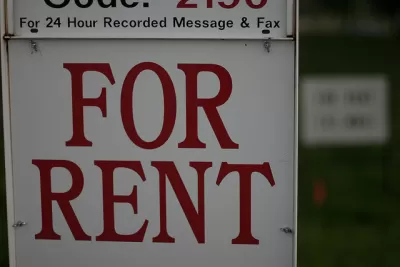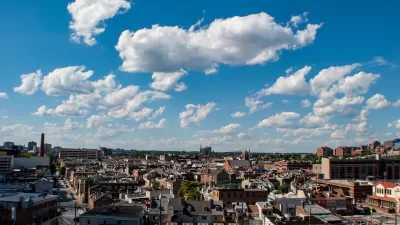The usual narrative of gentrification and displacement often assumes a static population. According to this study, urban renters move around very frequently, and most (but not all) of their moves are voluntary.

Gentrification can clearly affect urban renters, displacing residents as costs increase. But according to this study published in Urban Affairs Review, the discussion often skips over the fact that these neighborhoods are constantly changing regardless. Joe Cortright writes, "Many of the public discussions of gentrification assume that somehow, in the absence of gentrification, neighborhoods would somehow remain just the same, and that few or no residents would move away."
Using data from the Panel Survey of Income Dynamics that tracks family moves from 1987 through 2009, Isaac William Martin and Keven Beck found that in their sample, "About 54 percent of all renters moved in the last two years; about 13 percent of all renters reported an involuntary move. That means that about 75 percent of all renter moves were voluntary and about 25 percent of renter moves were involuntary."
"Involuntary" moves, which encompass eviction, health reasons, divorce, joining the armed services, and the like, were statistically higher in neighborhoods experiencing gentrification. However, "homeowners don't seem to be displaced by gentrification and [...] property taxes (and tax breaks for homeowners) don't seem to affect displacement."
FULL STORY: The constancy of change in neighborhood populations

Planetizen Federal Action Tracker
A weekly monitor of how Trump’s orders and actions are impacting planners and planning in America.

San Francisco's School District Spent $105M To Build Affordable Housing for Teachers — And That's Just the Beginning
SFUSD joins a growing list of school districts using their land holdings to address housing affordability challenges faced by their own employees.

The Tiny, Adorable $7,000 Car Turning Japan Onto EVs
The single seat Mibot charges from a regular plug as quickly as an iPad, and is about half the price of an average EV.

Seattle's Plan for Adopting Driverless Cars
Equity, safety, accessibility and affordability are front of mind as the city prepares for robotaxis and other autonomous vehicles.

As Trump Phases Out FEMA, Is It Time to Flee the Floodplains?
With less federal funding available for disaster relief efforts, the need to relocate at-risk communities is more urgent than ever.

With Protected Lanes, 460% More People Commute by Bike
For those needing more ammo, more data proving what we already knew is here.
Urban Design for Planners 1: Software Tools
This six-course series explores essential urban design concepts using open source software and equips planners with the tools they need to participate fully in the urban design process.
Planning for Universal Design
Learn the tools for implementing Universal Design in planning regulations.
Smith Gee Studio
City of Charlotte
City of Camden Redevelopment Agency
City of Astoria
Transportation Research & Education Center (TREC) at Portland State University
US High Speed Rail Association
City of Camden Redevelopment Agency
Municipality of Princeton (NJ)





























